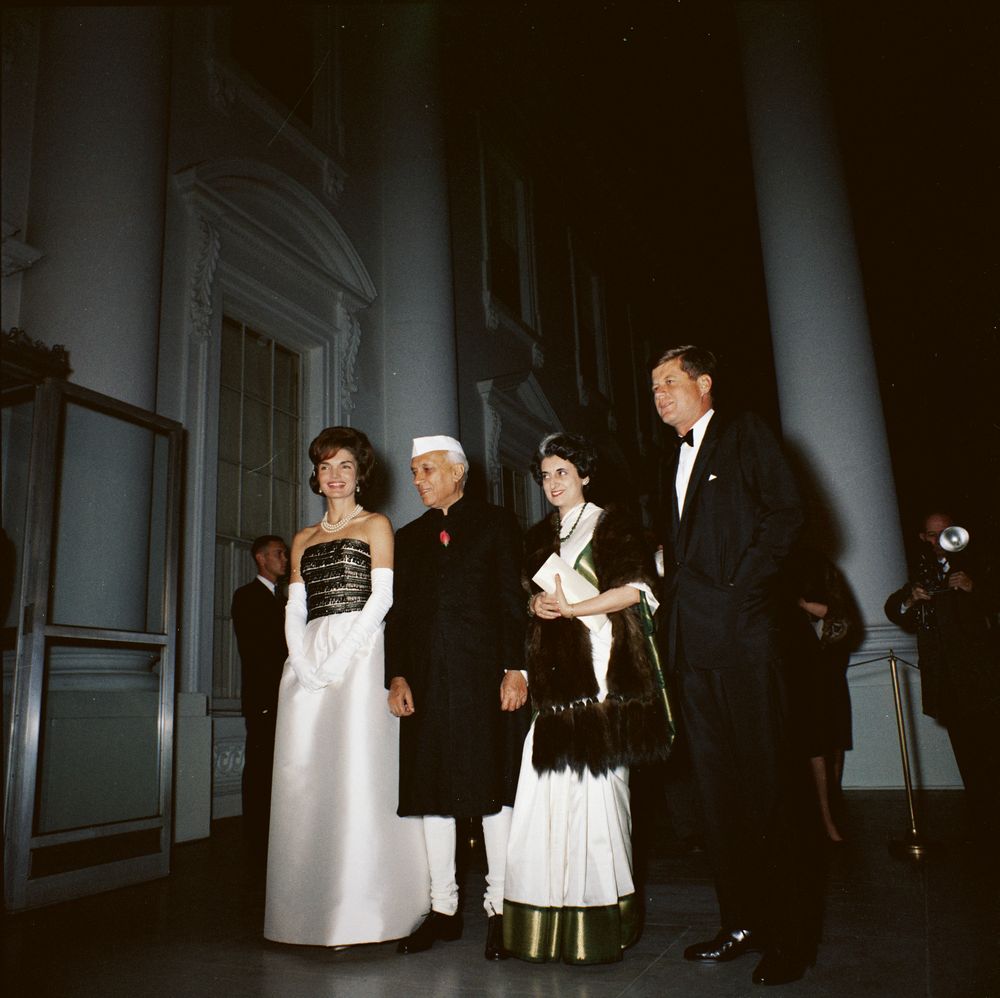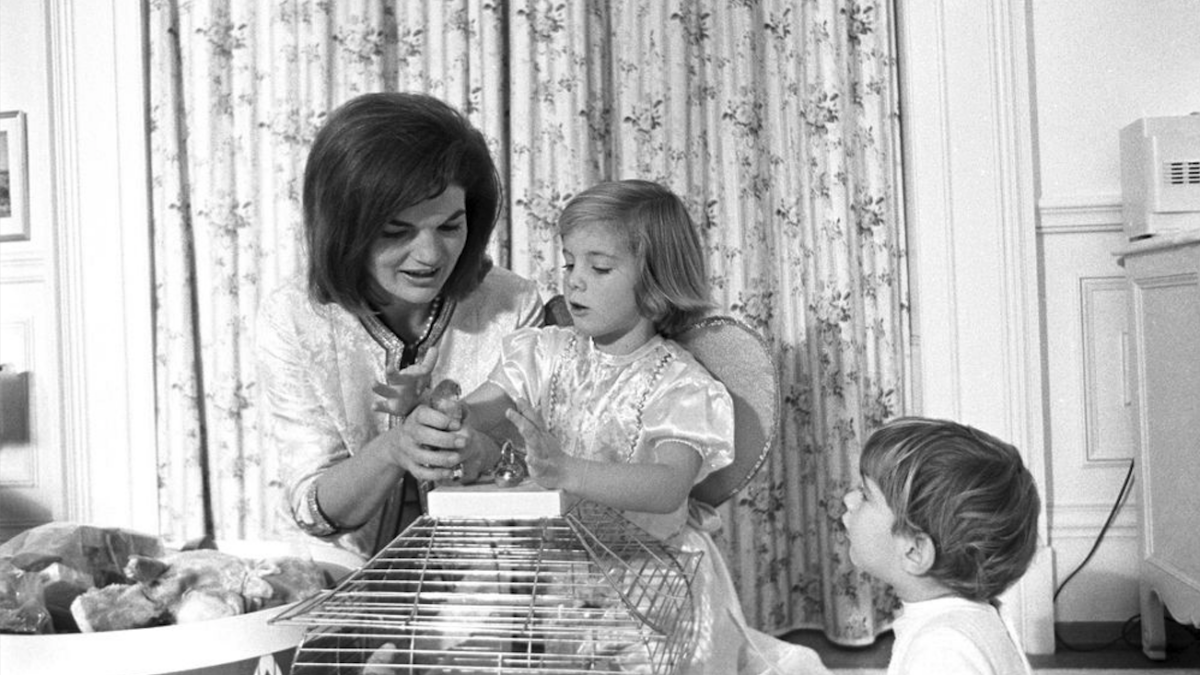As Wednesday marks the 60th anniversary of the tragic assassination of John F. Kennedy, historians and pundits will no doubt be evaluating his legacy. While the political successes and failures of his administration can be debated, much of what people love and remember about “Camelot” was directly influenced by First Lady Jackie Kennedy, including the image of “Camelot” itself. While our era urges women to compete directly with men, it is interesting to note that Jackie was not sitting at home discussing policy with her husband or even trying to influence policy.
The word “homemaker” often brings to mind sewing curtains and baking bread out on the prairie. Yet this narrow view of homemaking leaves out the innumerable other things that go into making a house a home. From restoring the White House and hosting state dinners to dressing stylishly and playing with her young children, Jackie Kennedy modeled a more appealing, and certainly more glamourous, type of homemaking.
During her brief tenure as first lady, she used her many strengths and talents to make a home not only for her family but for all of America in ways that were both traditional and aspirational. In an era starved for real culture and beauty, Jackie shows us how a woman can influence both her family and the nation in ways that go beyond just baking and sewing.
Creating a Living Museum
When the Kennedys moved into the White House in early 1961, Jackie set out to do what most women do when moving into a new house: make it a home. While most of us do that by visiting Home Goods and scouring Facebook marketplace for deals, Jackie assembled a team to help her turn the White House into a presidential palace. Her passion for history informed her work, and she told a reporter for Life magazine, “Everything in the White House must have a reason for being there. It would be sacrilege merely to redecorate it — a word I hate. It must be restored, and that has nothing to do with decoration. That is a question of scholarship.”
She formed a Fine Arts Committee to oversee the restoration, had Congress designate the White House as a museum, and raised millions of dollars in donations and gifts, including priceless portraits of Benjamin Franklin and Thomas Jefferson. She scoured storage rooms and the National Gallery herself, finding treasures like James Monroe’s gold French flatware and Teddy Roosevelt’s drinking mugs. She gave a guided tour of the White House restoration for television cameras in 1962, and it became one of the most-watched specials in television history with 80 million viewers and earned her an honorary Emmy.
The White House, she said, was not only a place for the president to work and live, but also a destination for every American who visited Washington, D.C., a showcase for art and culture, and a place of national pride. The popularity of Pinterest and HGTV attests to women’s continued interest in home renovations and decorations. Jackie’s restoration of the White House is this on a grand scale. She didn’t want a lifeless museum but a home where people were entertained, important meetings were held, and a family lived; a place her family could be comfortable and a nation could be proud.
Iconic Kennedy-Style Dinner Parties
In addition to renovations, Jackie applied her good taste to entertaining. Before the election in 1960, Jackie gave an interview where she said entertaining at the White House “shouldn’t be a drudgery, it should be a joy and done as graciously as possible.” The Kennedy administration soon became known for its parties, particularly the culture they provided. State dinners might include a Shakespeare performance or concert by an accomplished cellist. Jackie regularly arranged elaborate dinner parties and invited “stimulating people” such as diplomats, artists, and writers. She believed these were awfully valuable, saying, “[M]en can talk to each other afterwards. … The French know this. … If you put busy men in an attractive atmosphere where the surroundings are comfortable, the food is good, you relax, you unwind, there’s some stimulating conversation. … It’s part of the art of living in Washington.”
Jackie saw to the details of all these dinners personally, working on seating arrangements, planning entertainment, and studying menus. The Kennedys also hosted small dinners with intimate friends with plenty of cocktails and Italian music playing on the Victrola. In our lonely age that is starved for culture, the idea of classy dinner parties is intriguing. While most of us don’t know any cellists or have any writers or diplomats on speed dial, we can all add some elegance and culture to our lives in different ways. Have family dinners with a set table, lit candles, and Alexa playing classical music. Invite friends for cocktails, and dress up and discuss some good books. Kennedy-style dinner parties could be the all-in-one antidote to our loneliness, social media addictions, and falling birth rates!
But more than, “restorations” and entertainment, the most endearing thing about Jackie’s White House years is her devotion to her family. “My life here which I dreaded & which at first overwhelmed me — is now under control and the happiest time I have ever known — not for the position — but for the closeness of one’s family,” Jackie wrote to her friend William Walton in mid-1962. “The last thing I expected to find in the W. House.”

Prioritizing Children Above Fame or Fortune
Despite his infamous infidelities, Jackie was a devoted wife to Jack, campaigning and traveling with him. She considered herself a traditional wife, and her main job was to take care of the president. Her devotion to her children, Caroline and John Jr., was also striking for someone of her class and position. She made sure her schedule revolved around her children — she took them to meetings and on errands and was often seen playing with them on the South Lawn. It was not unusual for her to put on a scarf and sunglasses and take them to the park or circus with the Secret Service discreetly nearby.
On weekends they escaped to Glen Ora, a 400-acre property in Virginia away from the business of the White House and the prying eyes of Washington, D.C. “Jackie wanted her kids to have what she grew up with, and to make their lives normal and fun,” said friend Eve Fout. “She applied effort and ingenuity to that.” At Glen Ora, Jackie took the children on picnics in a cave, and in the evenings she enjoyed “giving them baths & putting them to bed — reading — the things I have no chance to do in the W. House.”
While she was certainly busy with the things she enjoyed doing (the restoration, entertaining, traveling), she also refused to do many of the traditional first lady duties, such as speeches and teas so she could be with her children. It is always refreshing and inspiring to see someone famous or with money prioritize her children. It is also clear that Jackie worked hard to make her family life the way she wanted it to be. It is easy for women today to cede control of their homes to outside forces — the culture, school and activities, and just general chaos and disorganization. Jackie can remind women that it is possible to have a vision for your home and family, and with “effort and ingenuity” it can be achieved.

Finally, it would be remiss to write about Jackie Kennedy and not mention fashion. Jackie is one of the style icons of the 20th century and like everything else in her life, she gave it thought and effort. She made Oleg Cassini the designer of her official wardrobe and worked with him to create the styles she liked — clean lines and slender silhouettes. These styles remain beautiful today. The dresses, always accented with tasteful jewelry, are extremely elegant, and though her trademark hat and gloves have become passe, seeing how well they complete the Jackie look is a good argument for bringing them back.
She reportedly spent more money on clothes than her husband made as president. While most of us can’t afford to dress like a Kennedy, we can all afford to dress nicely. Somehow over the last decade, jeans became dressing up, and many Americans regularly wear gym clothes and pajamas in public. An easy way to bring beauty back into our everyday lives could start with dressing up. If we value our homes and communities, shouldn’t we look nice in them?
When Jackie had dinner with Defense Secretary Robert McNamara, she was often discussing poetry, not Vietnam. She was also not sitting at home sewing or baking bread. She did what interested her and did it well and became one of the most popular first ladies in history. With our tendency to classify women as “trad wives” or “girl bosses,” Jackie Kennedy can be a shining example for the driven and well-educated women of the 2020s. If we took our education and interests and applied them to homemaking, instead of our careers, imagine the flourishing Camelots we could create.









